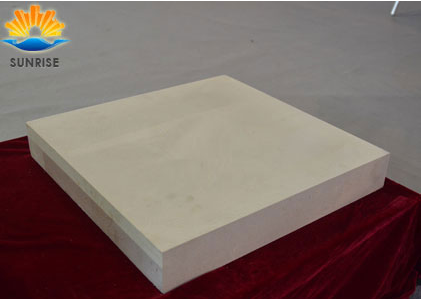Product
Fused Cast AZS Block
AZS Casting Type
AZS Ramming Materials
Fused Cast AZS TY-AZS41
Fused Cast AZS TY-AZS36
Fused Cast AZS TY-AZS33
Fused Cast Alumina Block
Fused cast Alumina Block TY-H
Fused cast Alumina Block TY-A
Fused cast Alumina Block TY-M
Fused Cast High Zirconia Block
Fused Cast Skid Rail Block
Silica brick
Magnesia Series Brick
Bonded Refractory Block
High alumina And Fire clay bricks
Insulation Series Brick
Ceramic Fiber Products
Contact Details
- 0086 371 63838939
- 0086 371 63835539
- sales@sunriserefr.com
- tkfanyi
- No.36 Fengchan Road, Zhengzhou City
Solutions
The Physical Properties of the Refractory Materials
- More related products
- Fused Cast AZS Block
- Fused Cast Alumina Block
- Fused Cast High Zirconia Block
- Fused Cast Skid Rail Block
Macroscopic organization structure of refractory material is heterogeneous body composed of solid material
and gas hole. Porosity is the important factors influencing the products under normal temperature and high
temperature performance, especially under the condition of high temperature, is products to the outside world
of erosion resistance ability is greatly reduced. Reason of gas hole formation: when products molding, the air in
the material is completely ruled out. After material moisture ruled out, leaving space. Raw material calcined is
inadequate, some should decomposition of salt is the complete decomposition, should be burning ingredients
to burn completely. The material composition is uneven, when high temperature firing, contraction is uneven,
etc.
1. porosity
The porosity of refractory can be divided into: closed porosity, closed in the products is not connected with the
outside world. Open pores, closed at one end and the other end connected with the outside world, for fluid
filling. Cut-through pore, The two sides of the cut-through products, get through for the fluid.

2. Bibulous rate
Bibulous rate is absorbed by all the open pores in the products of water quality and the quality of the dry sample
ratio. Because the bibulous rate of determination method is simple, in actual production often used for
identifying the quality of raw material calcined. The raw material calcined is the better, the bibulous rate value is
the lower.
3. Bulk density
The definition of bulk density is the ratio of dry weight and total volume of products, also known as a volumetric
weight. Volume density intuitively reflects the degree of the density of the products, it is an important
measure indicator of dense refractory products quality. But in the production of lightweight insulation products,
in order to reduce the heat capacity and thermal conductivity, people use various means to reduce the products
volume density.
4. True proportion
The quality of dry material and its true volume (not including pore volume) ratio. The true proportion of refractory
material, can reflect the material composition of purity or the degree of crystal structure transition, proportion,
etc.
The thermal properties
1. Thermal expansion
2. Thermal conductivity
Read more
Need more information? Drop us a line
For more information on any of our products please get in touch using the form below. One of our sales team will respond to your enquiry as soon as possible.
Copyright © 2014 Zhengzhou Sunrise Refractory Co., Ltd. Site Index Product IndexSitemap









